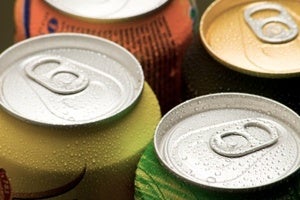June 18, 2010 — Raising the price on regular sodas may be the most effective way to encourage Americans to reach for less sugary drinks, suggests a new study published in the June 17, 2010 issue of the American Journal of Public Health. By implementing experiments at a Boston hospital cafeteria, researchers found that a substantial price increase had a greater impact than educational posters on sales of sugary drinks, which have been found to increase the risk of obesity and diabetes.
“This study has implications for the ongoing national conversation about the legitimacy of soda tax proposals,” said lead author Jason Block, an instructor in medicine at Harvard Medical School and physician at Brigham and Women’s Hospital, who did the research during a fellowship at the Harvard School of Public Health. “Pricing strategies should be considered as one option to reduce consumption of sugary beverages, a major contributor to the obesity epidemic.”
The researchers, led by Block and senior author Walter Willett, implemented a five-phase experiment at the Brigham and Women’s Hospital cafeteria in Boston. These included (1) a baseline period during which original prices of all soft drinks and zero-calorie water were posted on the refrigerators selling those items; (2) a 35 percent price increase on regular bottled soft drinks of $0.45, with new prices posted on the refrigerators; (3) a washout period during which prices were returned to baseline; (4) an educational campaign with posters encouraging cafeteria patrons to skip one soda per day to lose weight; and (5) a combination phase continuing the poster campaign and bringing back the price increase. For comparison, researchers collected data on cafeteria soda sales at Beth Israel Deaconess Hospital, also in Boston, during the same period.
During the experiment at Brigham and Women’s, sales of regular sugary drinks declined by 26 percent during the price increase phase. The educational campaign on its own did not affect sales. When the price increase and educational campaign were combined, there was an additional 18 percent decline in purchases of the regular soda compared with the washout period. The comparison site at Beth Israel showed no change in regular soft drink sales during the study period.
“This is one of the first true experiments with pricing strategies targeting regular soda,” said Block. “Through this experiment, we were in complete control of the pricing and educational interventions and feel confident that the changes in regular soda sales were directly related to our pricing intervention.”
Americans’ consumption of sugary drinks has risen substantially over the past 25 years. These and other sugary drinks may have an even greater impact on weight than sugar consumed in solid form, according to the researchers. People may compensate for overindulging in candy by eating less of other food, but they seldom do after drinking a 20-ounce vending machine soda, which contains nearly 17 teaspoons of sugar and 250 calories.
Block hopes the study will set the stage for future work testing similar interventions with different populations in different settings. More work is also needed to determine definitively that education at the point of purchase is unsuccessful in reducing regular soda purchases, he said. Additionally, the study authors wrote, “future research should test price increases on fruit juices and other sugary beverages and should examine several price levels to determine what price increase is most effective in reducing sugary beverages sales while maintaining revenue neutrality for a cafeteria or food establishment.”
–Amy Roeder
